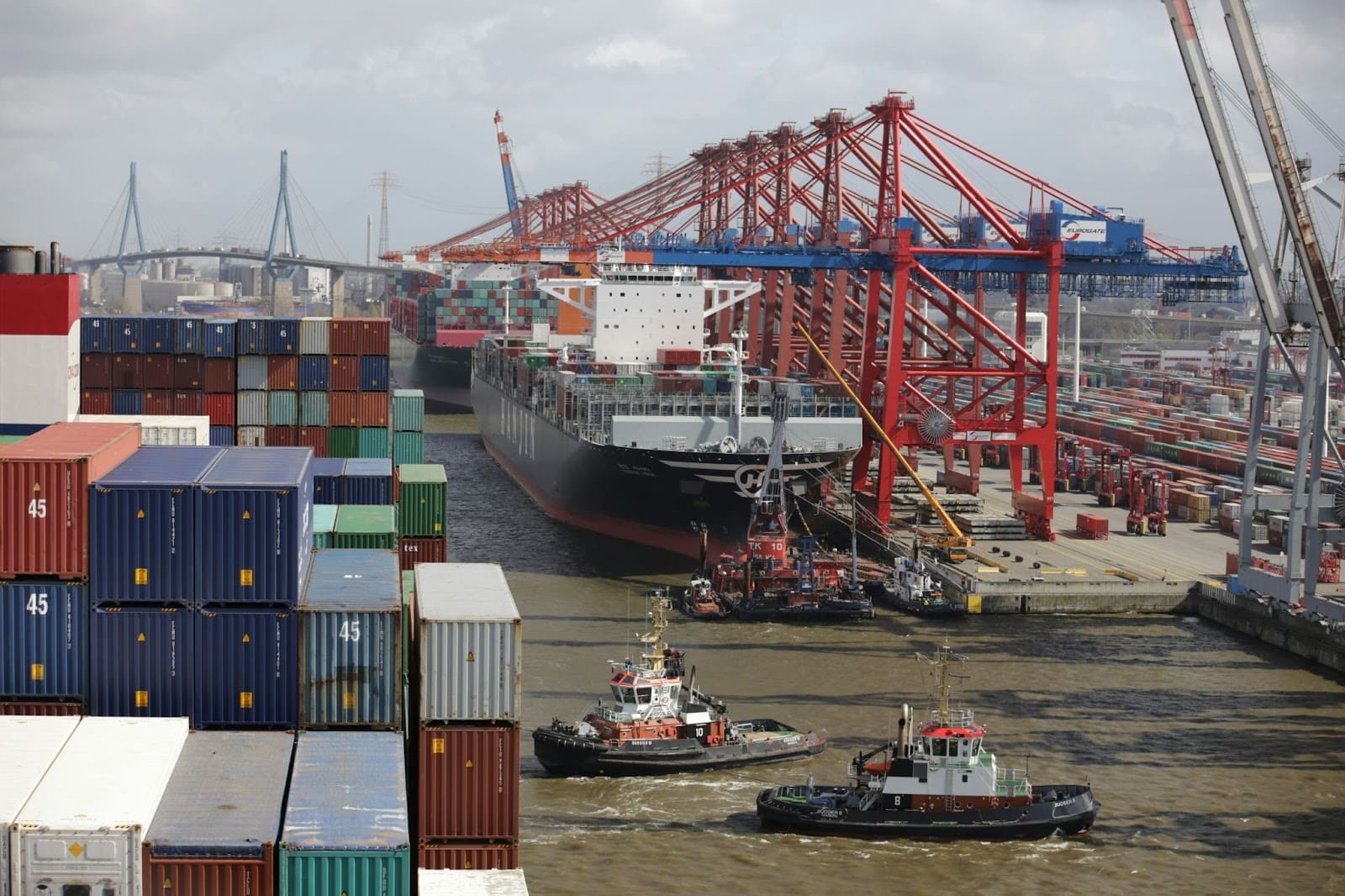International shipping can feel overwhelming, especially when you’re dealing with a country you might not ship to regularly. Sri Lanka, that beautiful island nation off India’s southern coast, is becoming an increasingly important trade hub in the Indian Ocean region.
Whether you’re a business owner looking to tap into new markets or someone sending a care package to family, understanding how shipping to and from Sri Lanka works can save you time, money, and a whole lot of headaches.
Why Sri Lanka Matters in 2026
Sri Lanka isn’t just about stunning beaches and world-famous Ceylon tea anymore. The country has been positioning itself as a strategic logistics hub connecting East and West. Its location makes it a natural gateway for trade between Asia, the Middle East, and Africa.
The Sri Lankan government has been actively encouraging foreign investment and streamlining import/export processes. For businesses, this means easier market access and growing opportunities. For individuals, it means more reliable and efficient shipping options than ever before.
Here’s the thing: while opportunities are growing, you still need to navigate customs regulations, understand shipping options, and choose the right partners. That’s where this guide comes in handy.
Getting Started: Choosing Your Shipping Partner

Your choice of courier service can literally make or break your shipping experience. You want someone who knows Sri Lanka’s customs inside out, offers reliable tracking, and won’t leave you hanging if something goes wrong. Trust me, this decision matters more than you might think.
When it comes to established international logistics, working with a reputable Sri Lanka courier service like DHL makes a world of difference. They’ve got the local expertise, established customs relationships, and infrastructure to handle everything from small parcels to large commercial shipments.
Plus, their door-to-door service means you’re not stuck figuring out last-mile delivery on your own.
Look for these key features when choosing your courier:
- Real-time tracking (because nobody likes playing the “where’s my package” guessing game)
- Customs clearance support (seriously, you want experts handling this)
- Flexible pickup and delivery options
- Insurance coverage for valuable shipments
- Responsive customer service (you’ll appreciate this at 2 AM when you’re stressed about a missing shipment)
Understanding Sri Lanka’s Customs Landscape
Let’s talk about everyone’s least favorite topic: customs. I know, I know, it’s not exciting, but getting this wrong can cost you serious time and money. Sri Lankan customs have specific requirements, and they’re pretty strict about enforcing them.
First things first: proper documentation is non-negotiable. You’ll need a commercial invoice detailing exactly what you’re shipping, its value, and its purpose. Think of this as customs’ way of understanding what’s in your box and how much duty they should charge.
For commercial shipments, you’ll also need:
- Certificate of origin (proving where your goods come from)
- Packing list (detailing how everything’s packed)
- Bill of lading or airway bill (your shipping receipt)
- Import/export licenses for certain goods
Here’s a pro tip: be incredibly specific and honest on your customs forms. “Electronics” doesn’t cut it; you need “Samsung Galaxy S24 smartphone, brand new, valued at $800.” The more detailed you are, the smoother customs clearance goes.
What You Can and Cannot Ship
Sri Lanka, like every country, has its list of restricted and prohibited items. Some of these are obvious, but others might surprise you. Let me break down the categories so you don’t accidentally ship something that’ll get confiscated.
Prohibited items (absolute no-goes):
- Weapons and explosives (obviously)
- Illegal drugs and narcotics
- Counterfeit goods
- Pornographic materials
- Items infringing on intellectual property rights
Restricted items (you can ship these, but you’ll need special permits):
- Pharmaceuticals and medicines
- Plants and seeds (agriculture department approval required)
- Live animals
- Precious stones (Sri Lanka is famous for gems, so they’re careful about this)
- Telecommunication equipment
Food items need special attention. While you can generally send packaged foods, fresh produce requires phytosanitary certificates. If you’re shipping tea back from Sri Lanka (because let’s face it, their tea is incredible), commercial quantities need proper export documentation.
Shipping Options: Speed vs Budget

Now let’s talk about your shipping options because you’ve basically got two routes: fast and expensive, or slow and affordable. Your choice depends on how urgently you need things delivered and what your budget looks like.
Express shipping gets your package there in 2-4 business days, typically. This is what you want for time-critical documents, urgent business shipments, or when you absolutely, positively need it there now. Yes, it costs more, but the peace of mind and speed often justify the premium.
Economy or standard shipping takes 5-10 business days, usually, sometimes longer, depending on customs processing. This works perfectly for non-urgent shipments where you’re prioritizing cost savings. Think bulk inventory, personal effects, or anything where a week’s wait doesn’t matter.
Here’s what really affects your shipping costs:
- Package weight and dimensions (obviously)
- Declared value (higher value means higher insurance and possibly duties)
- Destination within Sri Lanka (Colombo is easier than remote areas)
- Time of year (certain seasons see higher volumes and potentially delays)
- Fuel surcharges (because these are unfortunately a thing)
Packaging Like a Pro
Look, I’ve seen too many packages arrive damaged because someone thought a regular cardboard box and hope would suffice. Don’t be that person. Proper packaging protects your stuff and actually helps with customs clearance.
Use sturdy, corrugated cardboard boxes, not flimsy ones you grabbed from the supermarket. If you’re shipping fragile items, double-boxing with padding between layers is your friend. Bubble wrap, packing peanuts, or air pillows fill empty spaces and prevent items from shifting around.
Seal everything properly. That means quality packing tape covering all seams and edges. No duct tape, no string, no “this should hold” solutions. Your package goes through multiple handlers, conveyor belts, and possibly several aircraft or vehicles; it needs to survive the journey.
Label everything clearly. Your shipping label should be on the largest flat surface of the box, and honestly, it doesn’t hurt to have your address written directly on the box too (in case the label gets damaged). Inside the package, include a packing list if the box opens during transit, which helps get everything back where it belongs.
The Customs Clearance Process
Here’s where your shipment might sit for a while, so understanding this process helps set realistic expectations. When your package arrives in Sri Lanka, it goes through customs inspection and clearance before final delivery.
Customs officers examine the documentation first. If everything looks good and matches the physical package, clearance happens relatively quickly, sometimes within hours. If something’s unclear, mismatched, or triggers an inspection, delays happen.
Your courier service (if you chose a good one) handles most of this for you. They submit paperwork, answer customs queries, and pay duties on your behalf (which they’ll bill you for later). This is genuinely worth any service fees they charge customs clearance isn’t something you want to manage yourself.
Duties and taxes apply to most shipments above certain thresholds. Sri Lanka calculates these based on the CIF value (Cost, Insurance, and Freight). VAT, customs duty, and other levies can add 30-50% to your shipment’s value depending on the product category. Factor this into your budget from the start.
Tracking Your Shipment
Gone are the days of sending a package and just hoping it arrives eventually. Modern tracking systems let you follow your shipment’s journey in real-time, which is both convenient and slightly addictive (admit it, you refresh that tracking page constantly).
Most courier services provide tracking numbers that work across their entire network. You’ll see updates like “Departed origin country,” “Arrived at destination country,” “In customs clearance,” and finally “Out for delivery.” Each scan tells you exactly where your package is.
Some services even offer predictive delivery windows. Instead of vague “Tuesday delivery,” you get “Tuesday between 2-4 PM.” This helps you or your recipient plan to be available for signature-required deliveries.
If tracking shows your package stuck at one status for several days, don’t panic immediately. Customs clearance sometimes takes time, especially during busy periods or if your shipment needs additional documentation. That said, if it’s been stuck for over a week, contact your courier service for an update.
Common Challenges and Solutions
Even with perfect preparation, things can go sideways sometimes. Let’s talk about common issues and how to handle them like a pro.
Customs delays: Usually documentation-related. The solution? Respond immediately to any requests for additional information. Keep digital copies of all your documents readily accessible.
Address issues: Wrong or incomplete addresses cause delivery failures. Always confirm addresses with recipients, including postal codes and any specific delivery instructions. “House near the big tree” doesn’t help the delivery driver.
Refused or returned shipments: This happens when customs finds prohibited items, the documentation is seriously wrong, or the recipient refuses delivery. You’ll typically pay return shipping charges, so get it right the first time.
Damage claims: If something arrives broken, document everything with photos immediately before the delivery person leaves. Most couriers have specific timeframes for filing damage claims, usually 24-48 hours.
Special Considerations for Business Shippers
If you’re shipping commercially, a few additional factors need your attention. Regular shipping means you should definitely open a business account with your courier. You’ll get better rates, consolidated billing, and dedicated support.
Consider using freight forwarding services for large shipments. Once you’re moving pallets rather than boxes, air or sea freight becomes more economical than courier services. Freight forwarders handle all the complexities of larger shipments.
Build relationships with reliable suppliers or partners in Sri Lanka. Local contacts who understand the system can help smooth out issues, recommend good practices, and sometimes even help with customs clearance on the receiving end.
Making Your Shipping Experience Smooth
Successful international shipping to Sri Lanka comes down to three things: preparation, choosing the right partners, and understanding the process. Take time to research requirements, don’t cut corners on packaging, and work with experienced courier services who know the Sri Lankan market.
Start small if you’re new to shipping to Sri Lanka. Send a test shipment before committing to large volumes. This helps you understand transit times, identify any documentation issues, and build confidence in the process.
Keep detailed records of everything invoices, tracking numbers, customs documents, and correspondence. These prove invaluable if problems arise or you need to reference past shipments. Plus, good record-keeping helps with accounting and tax purposes.
The Sri Lankan market offers genuine opportunities for businesses and reliable connections for individuals. With the right approach and partners, international shipping doesn’t have to be stressful. It becomes just another part of your business operations or personal life, efficient, predictable, and manageable.
Now go ahead and ship with confidence. You’ve got this!





Be First to Comment